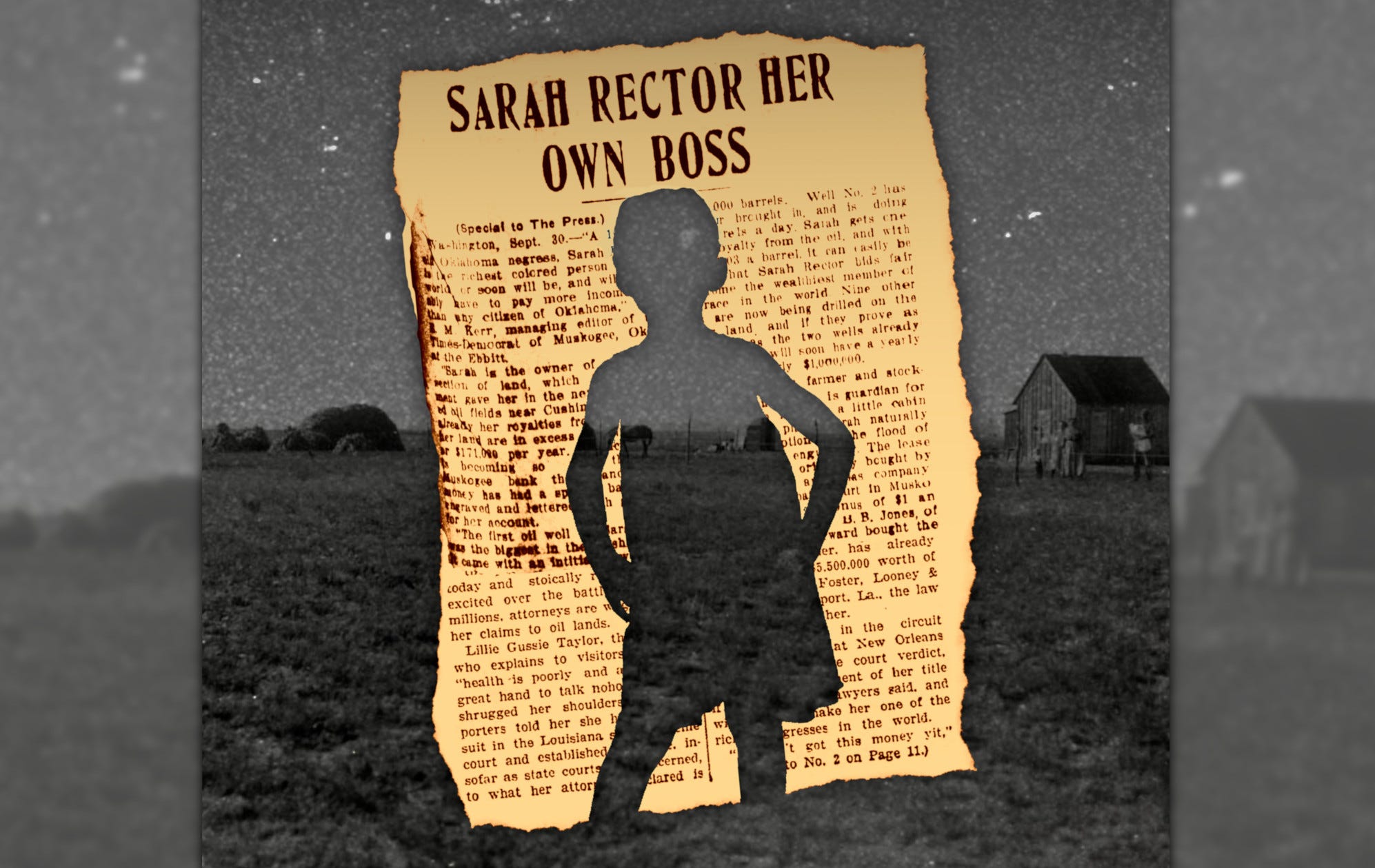From Truly Adventurous via Medium:
When an 11-year-old Black girl in Jim Crow America discovers a seemingly worthless plot of land she has inherited is worth millions, everything in her life changes — and the walls begin to close in. The untold story brought to life from thousands of pages of archival documents.

Sarah Rector, 11, stood up and wiped her hands on her sweat-soaked shift, a simple loose dress. She had to squint to block out the radiating sun. It was another hot August in rural Oklahoma — hot enough for her barefoot soles to grow numb from the scorching dirt. She wasn’t much taller than the cotton plants surrounding her.
Sarah, her siblings, dad Joe, and mom Rose would repeat this cycle day in and day out in the summer of 1913 until a sea of bulbous whiteness would stretch out before them. This was the Rector family’s life, and there was little exceptional about it for this time and place. They were Black farmers in the heart of Jim Crow America. They were relegated to the poorest parts of town, to the most menial lifestyle, and to degrading reminders of the long shadow of slavery. There were two mortgages on their property, putting it at risk of foreclosure. For a young girl like Sarah, her realistic prospects in life might be limited to backbreaking domestic work or agricultural labor. If she were lucky, she could become a teacher in a segregated and underfunded local school. Beyond these, most other professions were simply off-limits to poor and working-class Black women.
Like many other Black families from Oklahoma, the Rectors’ ancestors had been enslaved by the Creek tribe. That meant Sarah and her eldest siblings were eligible to be added to the Creek Nation’s Freedmen Roll, which under federal law entitled them to receive free land allotments.
For the most part, the program was a misplaced band-aid on centuries of mistreatment. Sarah’s allotment was almost 100 miles northwest of their town, too far away from the family’s farm to be practical. And that “free” land was hardly free. The properties given to Black residents tended to have uncultivable soil and a hefty annual tax bill. Sarah’s plot was called “a rocky piece of wasteland” by one observer. Joe Rector, a hard worker who protected the best interests of his family, wanted nothing to do with his children’s allotments. He petitioned the Muskogee County Court to authorize a sale of a few hundred dollars, but no buyer could be found. However hard Joe tried, it seemed that he was stuck with them.
Joe decided to lease Sarah’s land to an oil company. The lease offset some of the tax payments, and came with a royalty if a splash or two of oil happened to be found. The allotment might change from a dreadful burden to a tolerable inconvenience.
On this particular day, August 29, 1913, Sarah continued the demanding manual labor that helped support her family. She was too far away from her plot to see one of the countless sets of drilling equipment on the horizon twisting into the ground. She could not witness the oil start to bubble up. And then more. And more. If Sarah had found Aladdin’s lamp, as one newspaper later noted, she could hardly have commanded the genie to conjure a wilder scenario than this.
It was a gusher....
....MUCH MORE